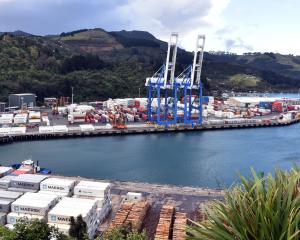Port Otago chief executive Geoff Plunket said the five sites ranged in size from less than 1ha to about 2ha; the latter being the Mobil petroleum storage site.
''It's very important for any port to have some long-term development options in land; depending on customer demand,'' he said.
While there were no plans at present to further develop any of the sites, Mr Plunket said areas could in the future be used for log storage expansion, warehousing or to increase container storage ares.
Beside the wharf is the HarbourCold coldstore, which is a 14-year-old, long-term joint venture with Sealord, while across the road is the Mobil petroleum storage area which Port Otago has been leasing to Mobil; the three tanks pictured having already been removed.
Mr Plunket said Mobil would be returning the site to Port Otago, during the next one to two years, but a date had not yet been agreed.
The Fryatt St yard, adjacent to the oil wharf, is leased to Icon Logistics, which is a 50:50 joint venture company with Port Otago and Dynes Transport.
At top right, is Port Otago's Leith St log storage facility, which was recently asphalted for $1 million. Port Otago is targeting the movement of more than 700,000cu m of logs across its wharves this financial year, which will support 40 to 50 ship calls.





